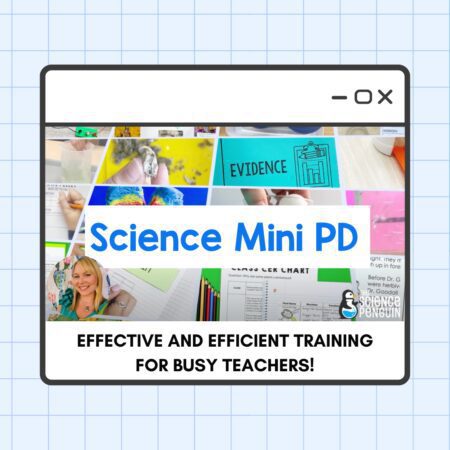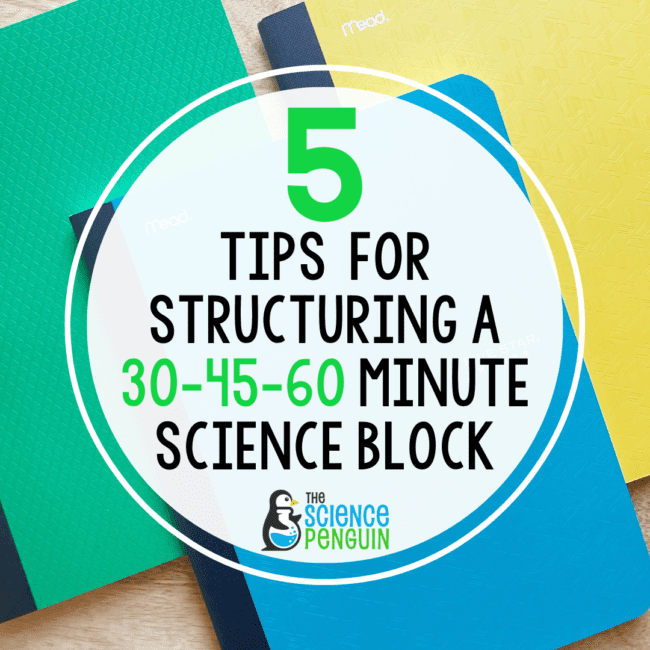
A common question I hear from teachers is how do you structure a science block that is __ minutes long? That’s a great question!
Although I know some classes will operate differently, I want to provide you with some great tips and tricks on maximizing your time with your students, so they gain as much material as possible within the allotted time of your block.
Let’s take a closer look so you can make your science block a success!
PREFER TO WATCH? VIEW THIS POST AS A VIDEO!
Tip #1: Planning Considerations
Planning your class period depends on your teaching style, management style, and student needs. Here are some essential things to remember when planning your science block.

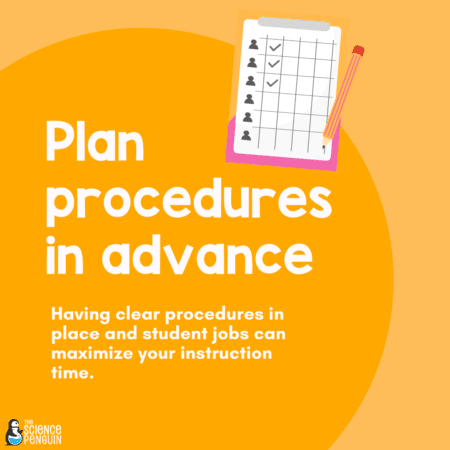

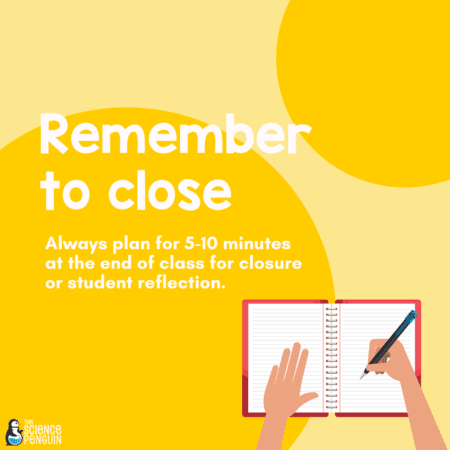
Tip #2: Time-Waster Solutions
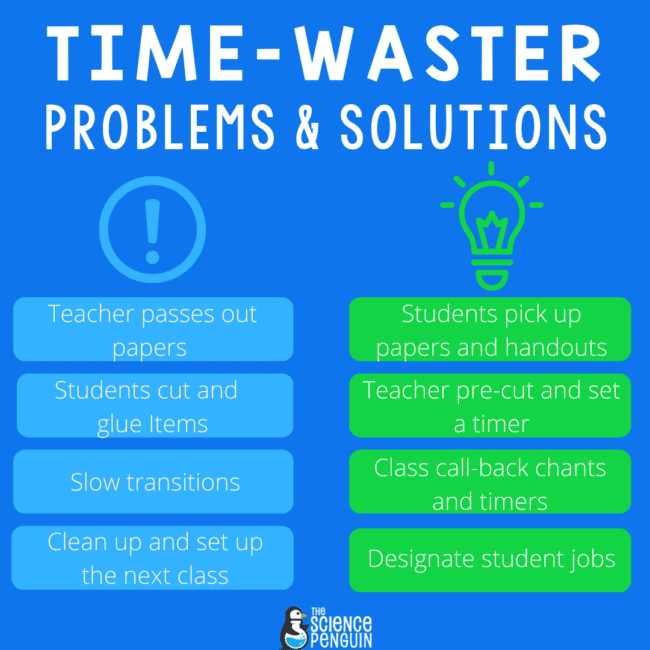
Over my teaching years, I always found that passing out papers, students taking time to trim and glue interactive notebook components, transitions, and cleaning up to get things ready for the next class period were typical time wasters.
I had to find ways to counter-act and maximize instructional time by finding easy solutions.
Problem #1: Taking the time to pass out papers and handouts
Solution #1: Students grab their necessary papers and handouts when entering the classroom.
Problem #2: Students took a lot of time cutting/gluing components for interactive notebook notes.
Solution #2: I would pre-cut items, so minimal trimming was necessary, or set timers to have students complete the task quickly.
Problem #3: Students take a lot of time to transition from one task to another.
Solution #3: Use timers or call-back chants to make transitions faster.
Problem #4: Students took a long time to clean up or set things up for the next class.
Solution #4: Designated class job leaders to assist in cleaning and setting up.
Tip #3: Routines & Organization
Having a set routine when your students walk through your door and having an organized classroom will structure your block of time for success!

Whether you are a new or seasoned teacher, having a welcome slide will keep your students accountable for what they need to do. I loved adding visuals and words so students could see everything they needed without just glancing over and forgetting items. These were also helpful for my ELL learners.
Slidesmania is a great site that offers free templates that you can customize. I also loved adding timers so students could keep track of the time they had left to complete tasks.
Model the routines at the beginning of the year or after a long break. I chose student volunteers to display how they came in the right way, the wrong way, and then the right way again so students could discuss what was good or could be improved.
To add a fun component, sometimes I would put a hidden message to come and see me if they read the board, and I would award a ticket for a drawing later in the week.
To keep things organized, I had my students keep their journals in crates in my classroom on a shelf. Each day I would have two student volunteers lay out the journals on a table so students could grab them as they came in the door.
At the end of the block, I would have a few helpers put out the next class, so it freed up my time to meet with students while having them take ownership and responsibility in the classroom.
I loved using storage tins to store glue bottles, markers, erasers, and scissors for certain activities. The supplies in storage containers allowed for less transition time to gather materials whenever we did interactive notebook activities.
I had green folders where we stored our Spiral Reviews or Warm Ups that we kept to the right of the crates. I also had another available table to set out any notes/handouts students would need for class.
To learn more about how I used Spiral Reviews in my class, check out this blog post: Why You Should Be Using Spiral Reviews In Science (Yes, Science)
Tip #4: Schedule Suggestions
Below are some schedules you can use for a 30, 45, or 60-minute science block. Remember that there will be times you have to adjust things depending on the activities you have planned out.
These will give you some ideas to ponder and explore whenever you have a lab, a day to quickly recap a previous day so students can work through stations, or even a catch-up day.

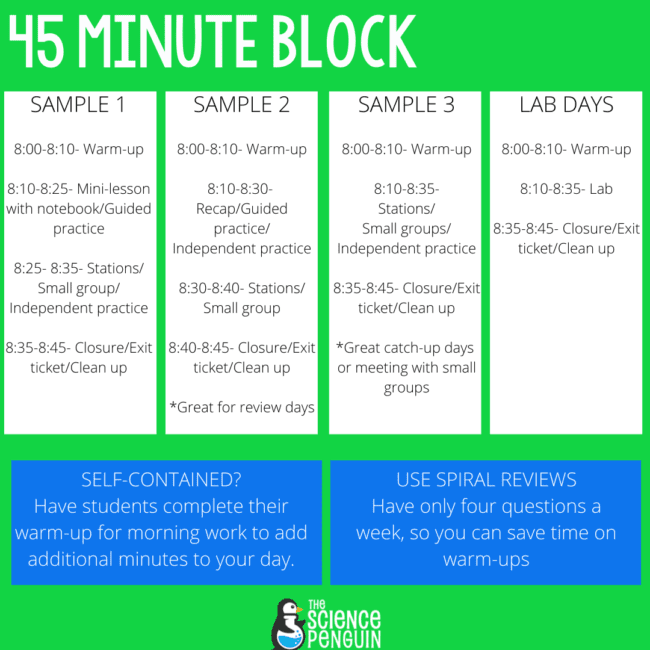
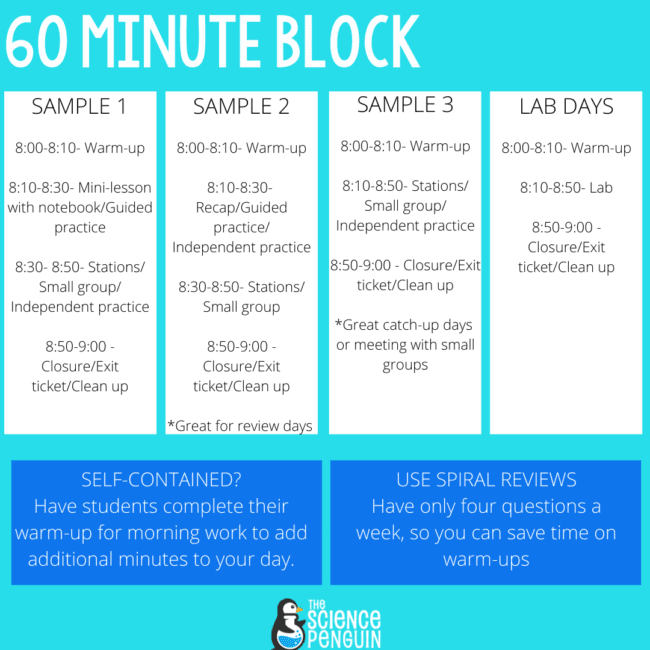
When I taught 5th grade, I had one hour each day for science, and I loved how the class was structured. An important note here is that in my class, we keep moving. The kids get used to moving quickly. Maximizing every moment in class has always been important to me.
Before moving to 5th grade science, I was a self-contained teacher in 3rd grade. We would structure lessons on Mondays, Wednesdays, and Fridays with 30 minutes to teach.
I had to be resourceful by finding ways to integrate science with reading, writing, technology, and math for cross-curricular experiences. The more exposure your students have to science in other core content areas, the more confident they will be.
Tip #5: Weekly Schedule
Here is a look at how I scheduled my week, but it may have looked different from week to week. A unit/topic did not necessarily fall on a Monday every week. You know your students and their level of mastery to understand what will work best for you.
I liked having assessments & vocabulary quizzes either on Thursdays or Fridays so students could reflect and see their areas of growth and strengths.
Giving timely feedback was critical, so I knew how to guide the instruction for future days, and it helped me understand who I needed to intervene with for additional support.
Flexibility will be vital in developing your classroom routines and structure. Thank you for being a driving force in making science a priority in your classrooms!
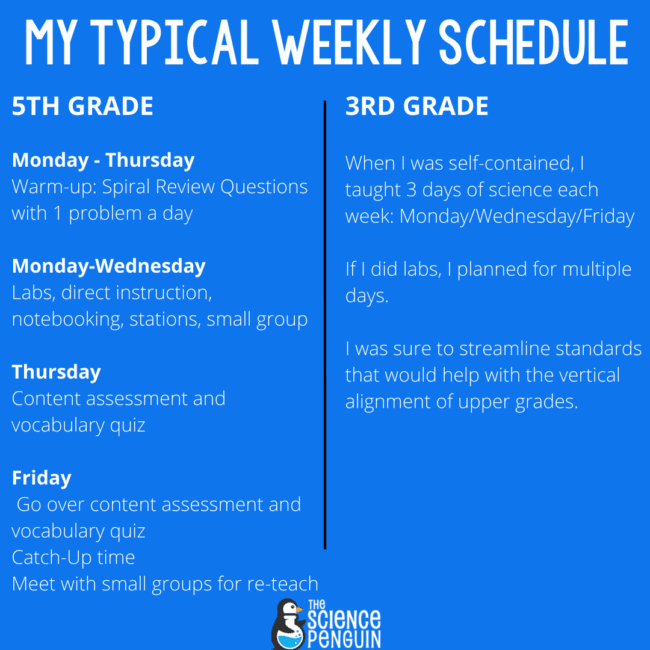
Learn more with this video
Access the Free Resource Library
This is an exclusive library of 40+ science printables, labs, activities, and games for grades 3-6. Sign up and check your email for immediate access.


